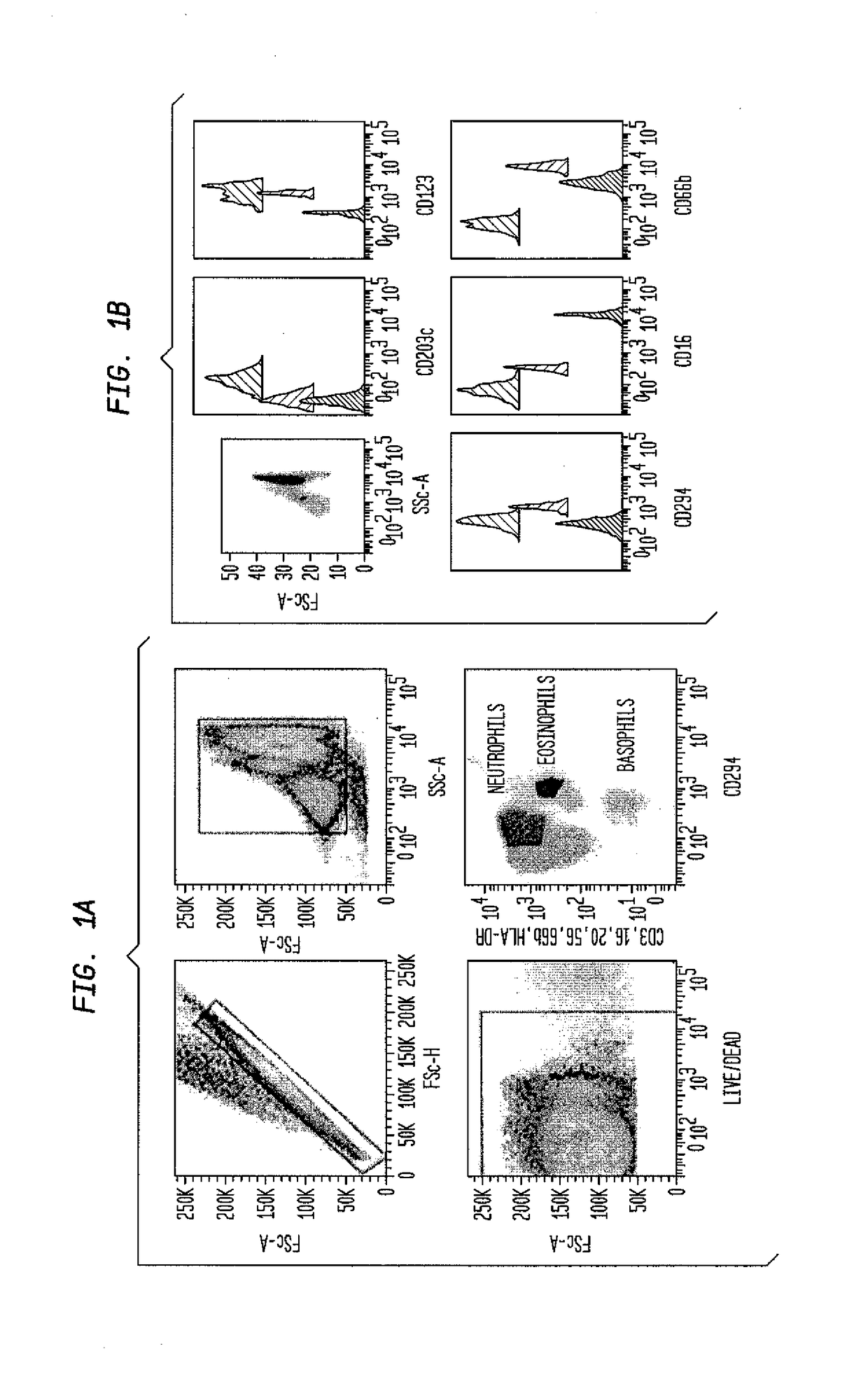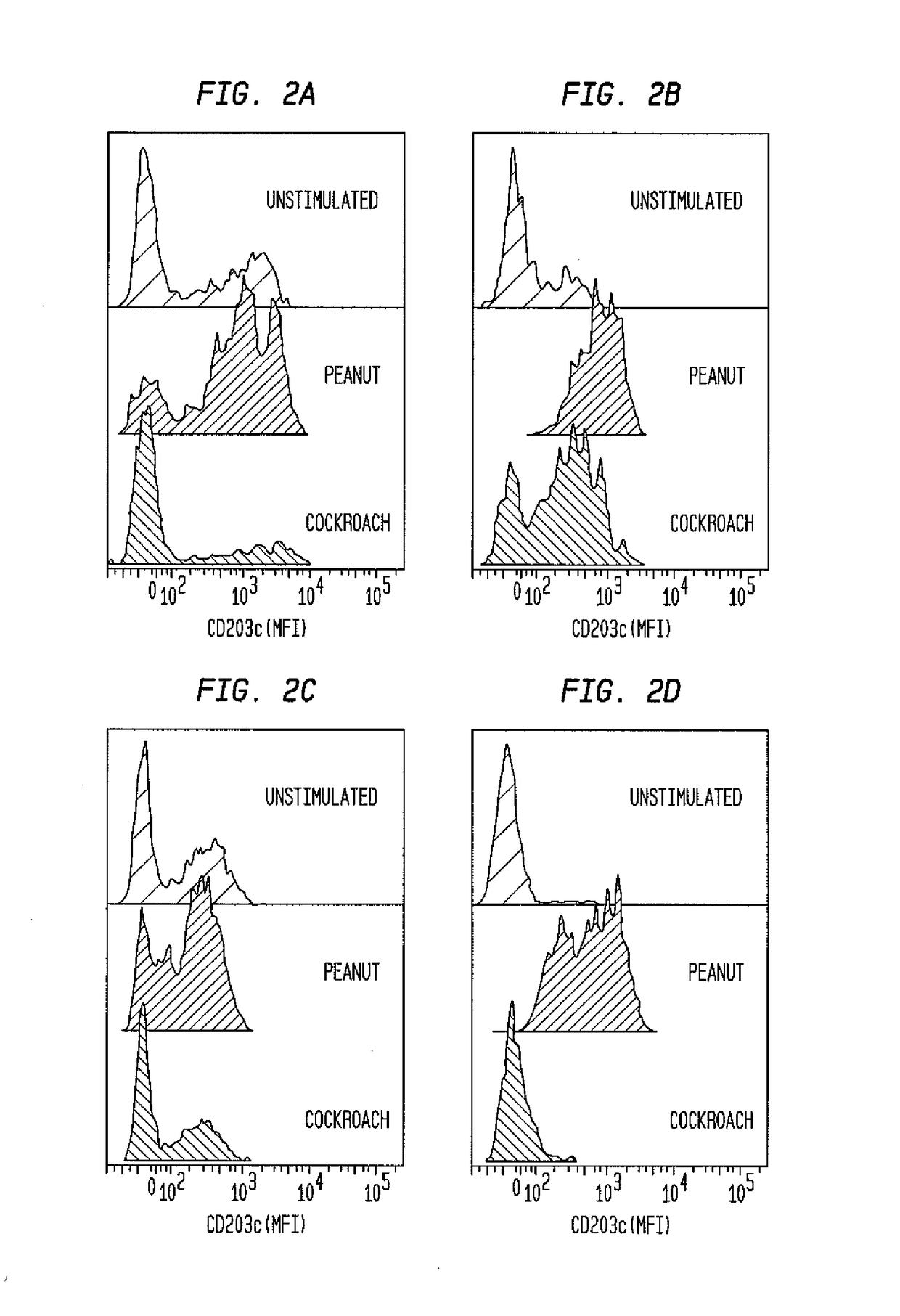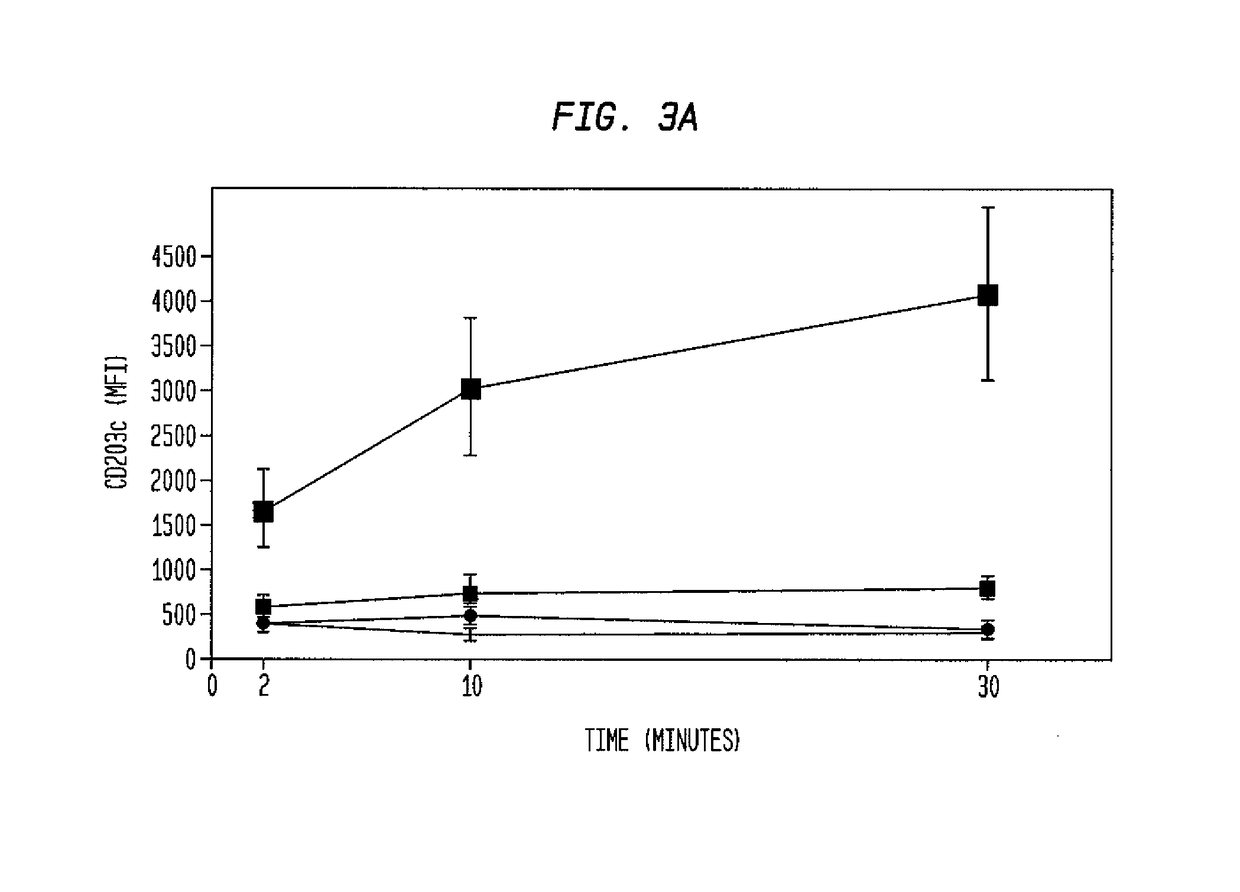Methods and assays for detecting and quantifying pure subpopulations of white blood cells in immune system disorders
a technology of assay, which is applied in the field of methods and assays for detecting and quantifying white blood cell subpopulations in human blood samples, can solve the problems of rhinorrhea (runny nose), itchiness, dyspnea (difficult breathing), or anaphylaxis, etc., and achieve the effect of determining susceptibility to an allergic reaction
- Summary
- Abstract
- Description
- Claims
- Application Information
AI Technical Summary
Benefits of technology
Problems solved by technology
Method used
Image
Examples
example 1
ophil-CD203c Assay Identifying Offending Allergens Used to Monitor Treatment Responses in Allergy Patients
example 1.1
cts
[0430]Clinical peanut allergy was determined by clinical history of food allergy reaction, peanut-specific IgE≥kUA / L (ImmunoCAP, Phadia, Uppsala, Sweden) and / or positive skin prick test to peanut allergen. Severity was graded based on published scores of anaphylaxis symptoms (see, for example, Nowak-Wegrzyn et al., Work Group report: oral food challenge testing. J. Allergy Clin. Immunol. 2009; 123(6 Suppl):5365-383). Five patients with peanut allergy were enrolled in a Phase I open-label study of omalizumab. Omalizumab ((Xolair®, Genentech, South San Francisco, Calif.) was dosed as per product insert guidelines based on total IgE levels and the subject's body weight.
example 1.2
e Collection and Processing
[0431]Blood was collected in tubes whose interior wall is coated with EDTA (commercially available from, for example, Becton, Dickson and Company (San Diego, Calif.)) by venipuncture, centrifuged (400×g for 10 minutes at 4° C.), and the leukocyte pellet retained while the plasma was centrifuged (3000×g for 10 minutes at 4° C.) to remove platelets. The blood sample then was reconstituted to its original volume by adding the platelet-free plasma to the pelleted leukocytes.
PUM
| Property | Measurement | Unit |
|---|---|---|
| volume | aaaaa | aaaaa |
| time | aaaaa | aaaaa |
| time | aaaaa | aaaaa |
Abstract
Description
Claims
Application Information
 Login to View More
Login to View More - R&D
- Intellectual Property
- Life Sciences
- Materials
- Tech Scout
- Unparalleled Data Quality
- Higher Quality Content
- 60% Fewer Hallucinations
Browse by: Latest US Patents, China's latest patents, Technical Efficacy Thesaurus, Application Domain, Technology Topic, Popular Technical Reports.
© 2025 PatSnap. All rights reserved.Legal|Privacy policy|Modern Slavery Act Transparency Statement|Sitemap|About US| Contact US: help@patsnap.com



